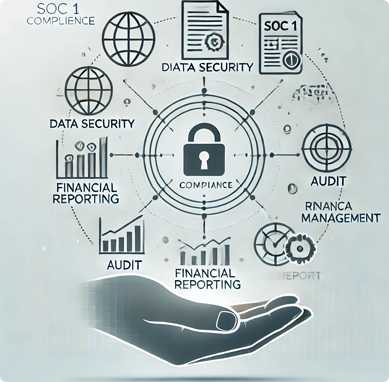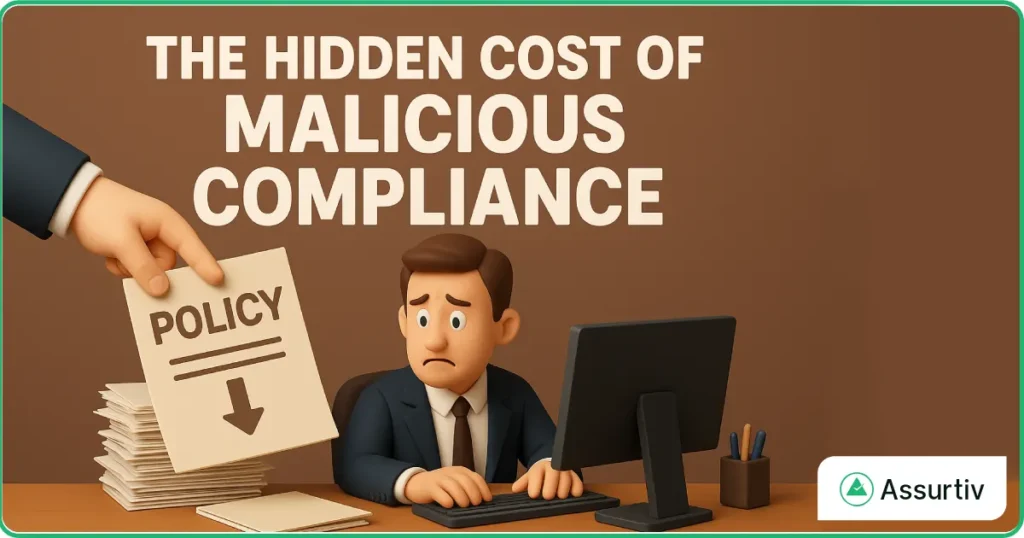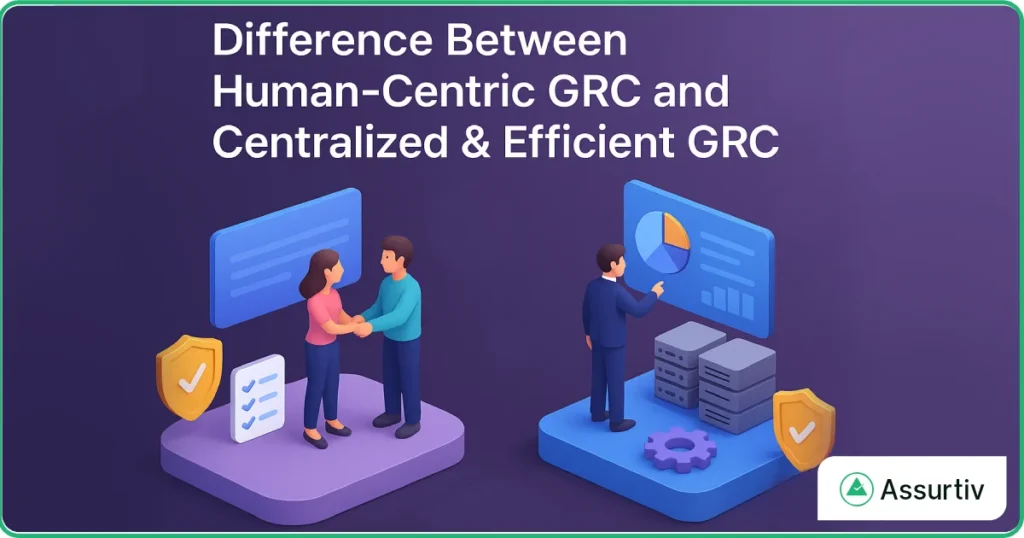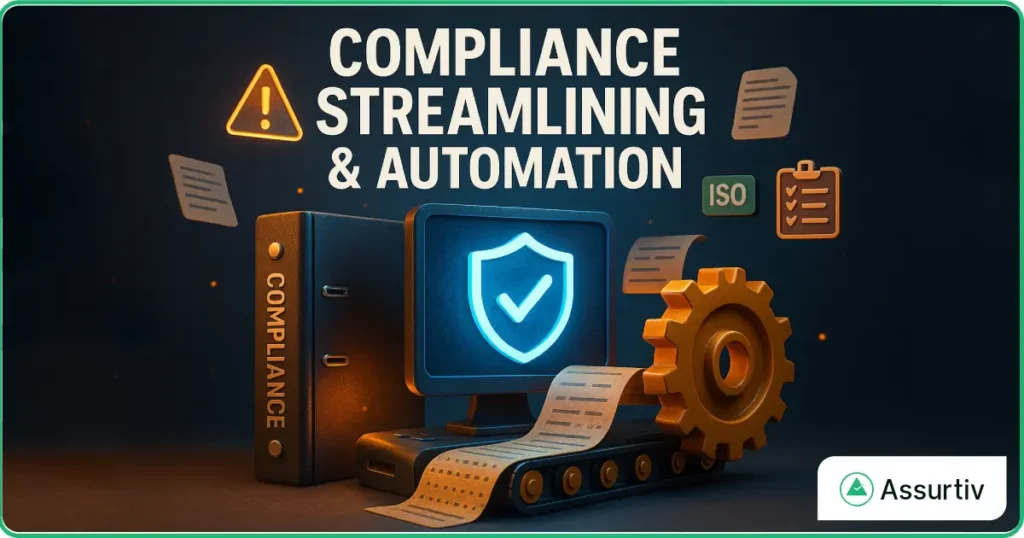SOC 1 Compliance: A Complete Guide
By assurtiv | Last Updated: 20 Jan 2025

SOC 1 (System and Organization Controls 1) compliance is an essential framework designed to ensure that a service organization’s controls are adequate to safeguard the financial information of its clients. It is crucial for companies that handle financial transactions or manage sensitive financial data on behalf of others. SOC 1 reports evaluate how well these controls impact the financial reporting of organizations.
In this blog, we’ll dive deep into SOC 1 compliance, its policies, objectives, importance, and the benefits of maintaining compliance.
What is SOC 1 Compliance?
SOC 1 is an audit standard developed by the American Institute of CPAs (AICPA). It specifically focuses on evaluating the internal controls that a service organization has in place for managing the financial reporting of its clients. The goal is to ensure that these controls are effective in protecting the client’s financial data from errors or fraud.
SOC 1 compliance is mandatory for service organizations that provide services which may impact their clients’ financial statements, such as payroll processing, data storage, and accounting services.
SOC 1 Policies and Controls
SOC 1 requires that service organizations establish policies and controls to address areas that may directly affect financial reporting. These policies must meet specific standards outlined by the AICPA.
Key areas typically covered under SOC 1 include:
- Data Security: Ensuring that sensitive financial data is protected from unauthorized access and breaches.
- Transaction Processing: Controls around the accuracy and integrity of financial data transactions.
- Audit Trails: The ability to track and verify financial transactions for accountability and transparency.
- Access Controls: Preventing unauthorized personnel from accessing sensitive financial systems or data.
- Disaster Recovery and Business Continuity: Ensuring that systems are protected against outages and data loss, and that services can be quickly restored after disruptions.
SOC 1 Objectives
The main objectives of SOC 1 are:
- Accuracy in Financial Reporting: The primary goal is to ensure that financial data is processed correctly and is accurate, supporting the integrity of client financial statements.
- Operational Efficiency: SOC 1 helps organizations maintain efficient operations that comply with regulatory requirements.
- Security and Privacy of Financial Data: It ensures that appropriate security measures are in place to protect sensitive financial information.
By meeting these objectives, organizations can prove that they are trustworthy stewards of their clients’ financial data.
Why is SOC 1 Compliance Important?
Trust and Transparency
SOC 1 compliance demonstrates to clients that a service provider has implemented the necessary controls to protect financial data. This builds trust and enhances transparency between the service provider and their clients.
Risk Mitigation
Financial errors or fraud can have a serious impact on an organization’s reputation and bottom line. SOC 1 compliance helps mitigate these risks by ensuring that proper controls are in place to detect and prevent such issues.
Regulatory Compliance
Many industries have strict regulations requiring organizations to maintain a high standard of financial reporting. SOC 1 helps companies stay compliant with these laws and industry standards.
Competitive Advantage
Having SOC 1 compliance can set a business apart from competitors who may not have undergone the same rigorous audit processes. It can be a deciding factor for clients choosing between service providers.
Data Integrity
SOC 1 ensures that any financial transactions or data processed by a third-party service provider are accurate and meet the standards required for proper financial reporting.
The SOC 1 Audit Process
- Type 1 Report: The Type 1 audit report assesses whether the controls are designed properly at a specific point in time. It evaluates the effectiveness of the controls based on the organization’s current design.
- Type 2 Report: The Type 2 audit report evaluates the operational effectiveness of the controls over a defined period (usually six months to a year). It provides a more comprehensive assessment of how well the controls work in practice.
Steps to Achieving SOC 1 Compliance
- Assess Your Current Controls: Understand which controls affect financial reporting and evaluate their effectiveness.
- Implement Necessary Controls: If your current controls are insufficient, develop new policies and implement processes to address any gaps.
- Undergo the Audit: The auditor will review your controls, processes, and systems, and generate either a Type 1 or Type 2 report based on their findings.
- Review the Report: Once the audit is complete, review the SOC 1 report and implement any recommendations for improvement.
Common Challenges in Achieving SOC 1 Compliance
- Resource Intensive: Achieving and maintaining SOC 1 compliance can be resource-heavy, requiring dedicated personnel and processes.
- Continuous Monitoring: Once SOC 1 compliance is achieved, organizations must continuously monitor and update their controls to remain compliant.
- Cost: The cost of the audit and the necessary infrastructure to maintain controls may be a challenge for some organizations, especially small and medium-sized businesses.
Conclusion
SOC 1 compliance is crucial for service organizations handling financial data on behalf of clients. By meeting SOC 1 standards, organizations can ensure the integrity, accuracy, and security of financial transactions, enhancing their reputation and trust with clients. While the process of becoming SOC 1 compliant can be demanding, the benefits far outweigh the effort, ensuring a secure, efficient, and trusted financial reporting environment.
At ASSURTIV, we understand the importance of robust controls in managing risk and compliance. As an integrated GRC application powered by AI, ASSURTIV can help ensure that your organization meets all your GRC needs, offering automated solutions to simplify compliance, security, and risk management processes.




